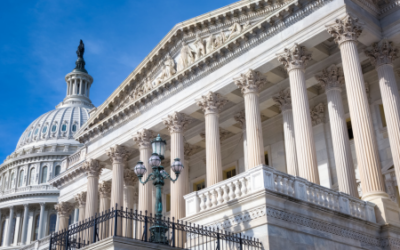Artificial Intelligence or AI technology is destined to change the way we work, live, travel, entertain ourselves and stay healthy. It will also change public safety and almost every other aspect of government.
Many recent changes will impact the use of AI. Last fall, the Trump administration issued a series of guidelines related to the integration of AI into public-sector use. It was immediately obvious that AI was coming to government and the administration obviously felt that some guidance was necessary.
Now, only a few short months later, public safety and law enforcement are experiencing significant and immediate disruptive change. Public safety has new tools but this is a positive thing for almost all stakeholders.
Artificial intelligence uses technology to gather data (even sensitive data), use it to predict trends, integrate it to analyze activities, mingle and cross-reference disparate information sources and then signal guidance to law enforcement officials. Integrating AI technology has allowed investigators to streamline processes, detect abnormalities, reduce time and resources and prevent crime. From cyberattacks to tax fraud, artificial intelligence has the ability to point government officials to first-time offenders, other lawbreakers and hardened criminals.
Sounds good? Well, not to everyone. Lawmakers are hearing complaints from citizens concerned about privacy. That, of course, leaves the lingering question of how much privacy should be sacrificed for public safety. On that…there is no consensus.
In spite of varied opinions, taxpayer dollars are flowing to research and development (R&D) of AI. Lots of revenue and resources, to be clear. In fact, federal investment in R&D for AI has grown 40 percent since 2015 and that trending increase will continue to escalate. This is just one example of the new world of technology.

The private sector, however, is moving quicker to embrace AI than the public sector. At least 50 percent of all private companies today report some use of AI. On the flip side, only 20 percent of governmental entities reported the implementation of AI. That will change quickly because public officials have no choice – they are all seeking efficiency, quicker response time for everything they touch and reduced costs.
The state of Utah leads all other states in implementing AI. Utah’s real-time public transit app (UT On Time) tracks traffic and suggests less crowded routes. Motorists love it and the state uses other AI technology that pleases citizens. But, the most impressive use of AI is its contribution to cybersecurity. The monitoring, tracking and analysis of potential threats and the blocking of potentially 1 billion attacks daily on state systems provides incredible security coverage. Other states should take note.
The New Orleans Police Department is piloting an AI program to help police anticipate crime. The AI technology that has been installed monitors and analyzes public data to make individualized predictions. The information used includes traffic citations, arrest information, property values, job data and more. The city is likely to expand the program to reviewing camera footage soon.
AI can integrate with software to review camera footage, detect faces and send photos through profile databases. The software is capable of pinpointing anything suspicious and AI trains the software to seek specific things that could lead to crime.
AI is even replacing tax officials in some areas. Indiana’s Department of Revenue increased its surveillance of tax documents with AI software. The software recently identified $110 million in bogus refunds. The result was a huge savings for taxpayers and a 97 percent drop in overall tax fraud. The AI software can cross-reference documents at a more efficient and accurate rate as well as identify abnormalities at a much higher rate. Once the software is guided to perform a specific task, it can do it repeatedly at a very fast pace without errors.
A report released last month made it known that the Boston Police Department has been using artificial intelligence to monitor social media accounts for some time. Between 2014 and 2016, the department tracked keywords on Facebook and Twitter and flagged accounts that were deemed suspicious via an AI algorithm. Several keywords tracked focused on extremist groups such as the Islamic State. The AI program can search profile data rapidly and collect trends and background information on certain users.
New York is using a technology that is still new to most people. It is called shooter identification software. Currently, only about 20 percent of gunshots are reported to authorities by individuals and when reports are filed, they are often missing vital pieces of information. New York City officials implemented technology that identifies the exact location of a shooter. A system of sensors picks up the sound of gunshots and then a real-time learning AI algorithm triangulates the location and notifies the police immediately.
Change is occurring at warp speed and much of the change is being dramatically impacted by AI. There is little chance of any slowdown in the foreseeable future. Citizens and the public at large should take note because AI will obviously touch all lives in the near future.
SPI’s e-newsletters are an excellent source of government contracting opportunities. Sign up today to ensure you never miss out!






